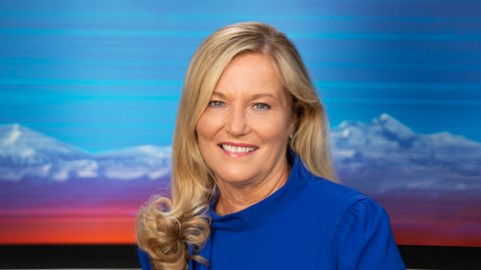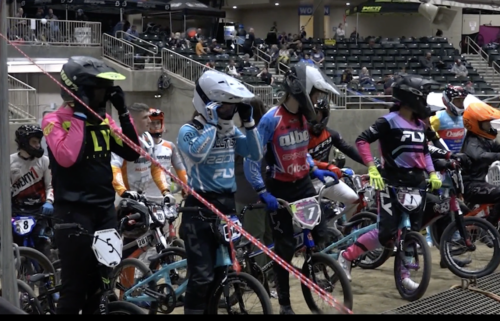‘We don’t know where the deer went’: Surprising drop in wildlife crashes has insurers scratching their heads
(Update: Adding video, comments from ODOT and insurance non-profit)
BEND, Ore. (KTVZ) -- The Insurance Institute for Highway Safety has released its latest findings on wildlife-related crashes in of Oregon. It shows that claims for wildlife-related vehicle collisions in the state dropped "mysteriously" in 2022, according to an industry group.
From October through December, Oregon drivers have a one in 197 chance of hitting a deer or other wildlife, according to State Farm Insurance -- and that's a more rare occurrence than for the US as a whole, at one in 127.
"We don't know where the deer went. It's a strange phenomenon. There doesn't appear to be any change in hunting patterns. There, as far as we know, isn't, you know, a lack of a fewer deer that exists on the planet. And we can assume maybe the cars are safer and people have been more cautious," Kenton Brine, president of NW Insurance Council, said Tuesday.
According to ODOT, warmer weather and new highway wildlife crossings may have contributed to the decrease. On average, about 6,000 carcasses are cleaned up each year across the state.
The Oregon Department of Fish and Wildlife says it's working on finalizing a wildlife corridor action plan to bring collision numbers down even more, but the decrease doesn't mean drivers can relax.
"Because animals tend to move when it starts to get dark or at nighttime," ODOT Region 4 Public Information Officer Kacey Davey said Tuesday.
"If you see one animal on the side of the road, you can expect that there's probably more, because they usually travel with each other," Davey said. "That's a really common thing, especially for deer and elk."
If you do hit wildlife, NW Insurance Council says most standard auto insurance policies will pay for damage, if you have optional comprehensive coverage
"It's the only coverage that will pay to fix your vehicle, if you hit a deer or if something happens to your car," Brine said. "An average damage cost to repair a vehicle is in the $4,500 to $5,000 range for damage done by striking an animal. Those costs are going up really dramatically."
Here's the organization's news release:
Wildlife collisions declined in 2022, but driver safety - and insurance coverage - remain crucial
What to Know
• The Insurance Institute for Highway Safety reports Insurance claims for animal-vehicle strikes dropped significantly in 2022.
• Motorists in the United States have a one-in-127 chance of colliding with a deer or other wildlife, according to State Farm, and Oregon drivers have a one-in-197 chance.
• Your Auto Insurance policy will pay for damage to your vehicle from a collision with wildlife, but only if you have optional Comprehensive Coverage.
PORTLAND, OR, -- The Insurance Institute for Highway Safety (IIHS) reports that insurance claims for wildlife-vehicle collisions mysteriously dropped in November 2022, even as traffic returned to pre-pandemic levels.
That doesn’t mean drivers can relax, however. Vehicles and wildlife can be a lethal combination, so it’s important to continue safe driving practices and consider auto insurance options.
As the weather gets colder and days get shorter, drivers face a greater risk of collisions as deer and other wildlife migrate from the mountains and unexpectedly dart across roads and highways. The month of November typically has the highest number of wildlife-vehicle collisions.
“Collisions between vehicles and large animals can cause severe damage and serious injury to drivers and passengers,” said Kenton Brine, NW Insurance Council president. “Using caution and staying alert can save your life and eliminate the need for costly vehicle repairs.”
Brine said a standard Auto Insurance policy will pay for damage to your vehicle, less the deductible, if you hit a deer or any other animal, but only if you have optional Comprehensive Coverage.
According to a 2022/2023 analysis by State Farm, Oregon drivers have a one-in-197 chance of hitting a deer. And more deer-vehicle collisions occur between October and December than any other time of year.
“All drivers are required by law to carry an Auto Liability Insurance policy when they drive, which provides coverage to pay for injuries or damage suffered by others in an accident which is your fault,” Brine said. “But to pay for damage to your own vehicle from a collision with wildlife, you’ll need Comprehensive coverage, which is an inexpensive addition to your auto policy.”
NW Insurance Council offers the following defensive driving tips to help you avoid wildlife while on the road:
• Be attentive from sunset to midnight and the hours just before and after sunrise. These are the highest-risk periods for deer-vehicle collisions.
• Drive with caution when moving through wildlife-crossing zones, in areas known to have large deer and elk populations and in areas where roads divide agricultural fields from forestland. Also be aware that wildlife collisions also happen on city arterials and suburban neighborhood streets.• Deer seldom run alone. If you see one deer, others may be nearby.
• When driving at night, use high-beam headlights when there is no oncoming traffic and no cars directly ahead of you.
• Brake firmly when you notice deer or elk in or near your path and stay in your lane. Many serious crashes occur when drivers swerve to avoid an animal and hit another vehicle or lose control of their car.
• If you hit an animal, pull over and call law enforcement to direct you to your next step. Some states have special requirements regarding animal collisions.
• Always wear your seatbelt. The National Highway Traffic Safety Administration (NHTSA) estimates that seat belts saved the lives of 14,955 people in 2017
For more information about insurance, contact NW Insurance Council at (800) 664-4942.
NW Insurance Council is a nonprofit, insurer-supported organization providing information about
home, auto and business insurance to consumers, media and public policymakers in Washington,
Oregon and Idaho.




